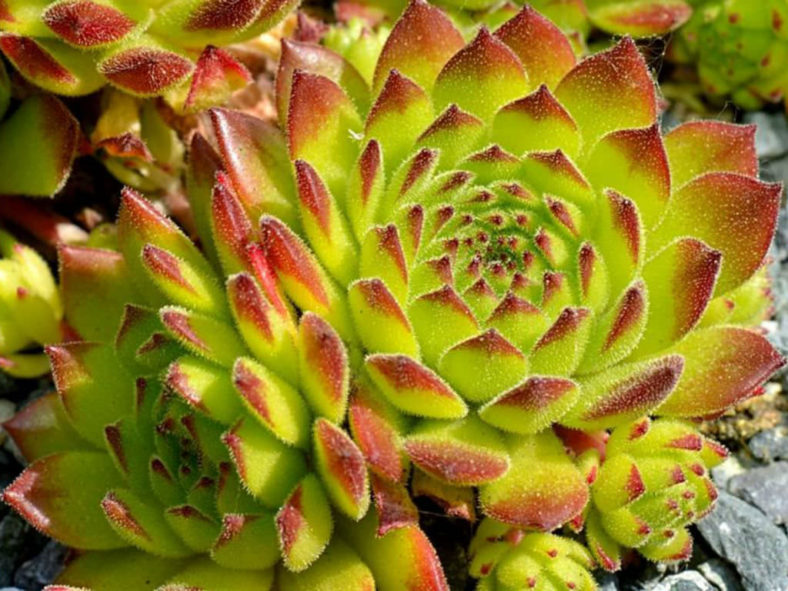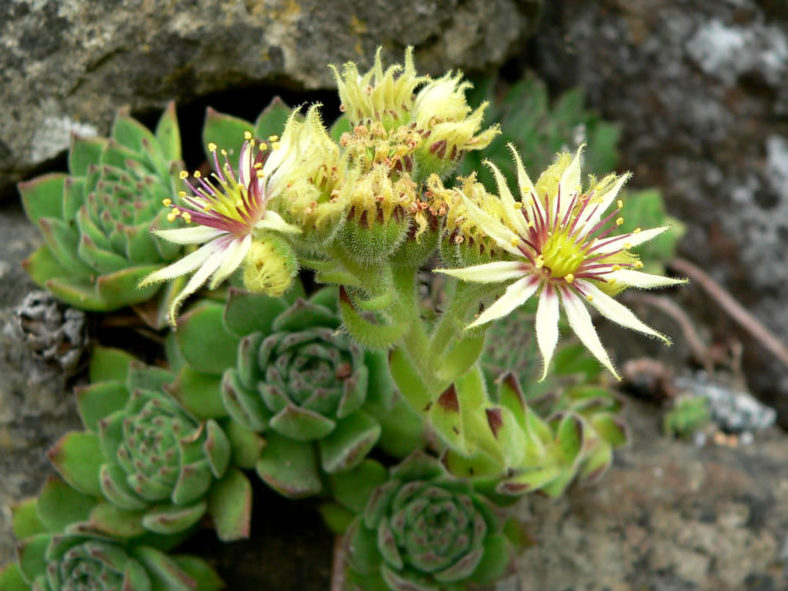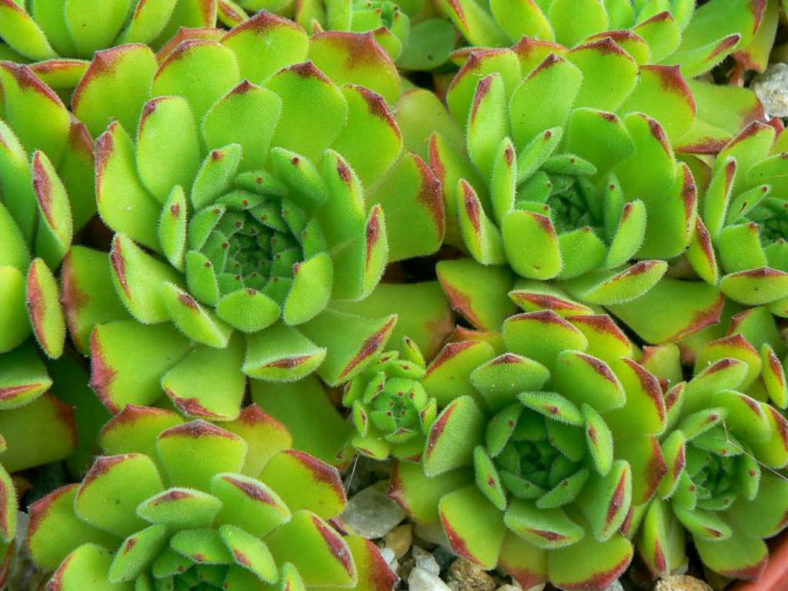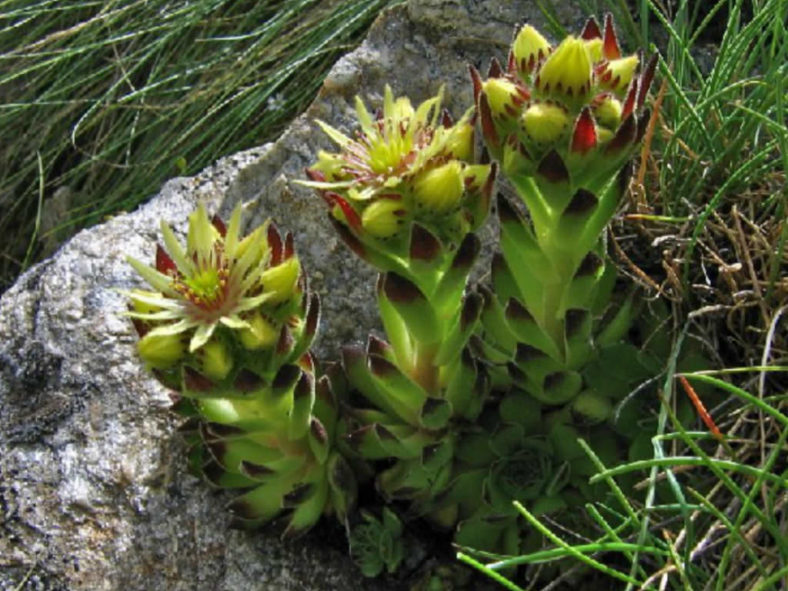Scientific Name
Sempervivum grandiflorum Haw.
Common Name(s)
Houseleek, Hens and Chicks
Synonym(s)
Sempervivum braunii, Sempervivum gaudinii, Sempervivum globiferum, Sempervivum wulfenii subsp. gaudinii
Scientific Classification
Family: Crassulaceae
Subfamily: Sedoideae
Tribe: Sedeae
Subtribe: Sedinae
Genus: Sempervivum
Etymology
The specific epithet "grandiflorum" (pronounced "gran-dih-FLOR-um") means "having large flowers" and refers to the relatively large flowers of this species compared to other species in the genus Sempervivum.
Origin
Sempervivum grandiflorum is native to southwestern Switzerland and northwestern Italy.
Description
Sempervivum grandiflorum is a small, hardy succulent that forms rosettes of green leaves tipped with red and covered with short, soft hairs. The rosettes can reach a diameter of 6 inches (15 cm) and freely produce offsets on spreading, leafy stolons, forming a dense mat over time. The hairy leaves are almost sticky to the touch.
The flowering stem can grow up to 8 inches (20 cm) tall. The flowers are star-shaped, 10- to 15-merous, and can reach a diameter of 1.2 inches (3 cm). They have yellowish petals with a basal purple spot and appear in summer in clusters on a leafy stalk that can grow up to 12 inches (30 cm) tall.

How to Grow and Care for Sempervivum grandiflorum
Hardiness: USDA hardiness zones 5a to 10a: from -20°F (-28.9°C) to 35°F (1.7°C).
Sempervivums are not difficult to grow, provided they are not waterlogged and killed by excess watering. They can be easily grown outdoors and in containers, and they earned the name "Houseleeks" from their tendency to root on the roofs of houses. After the mother plant flowers, it will naturally die, but it has likely produced many offsets that will continue to grow by then. These are excellent for cold windows. Sempervivum earned its popular name, Hens and Chicks, from their growth habit. The mother plant, or hen, sends off numerous offsets, which will cluster around her base like chicks. These offsets can be easily repotted, or the plants can be left to form a clumping mat.
Repot as needed, preferably during the warm season. To repot a succulent, ensure the soil is dry before repotting, then gently remove the pot. Knock away the old soil from the roots, removing any rotted or dead roots in the process. Treat any cuts with a fungicide. Place the plant in its new pot and backfill it with potting soil, spreading the roots as you repot. Leave the plant dry for a week or so, then begin to water lightly to reduce the risk of root rot.
Learn more at How to Grow and Care for Sempervivum.
Links
- Back to genus Sempervivum
- Succupedia: Browse succulents by Scientific Name, Common Name, Genus, Family, USDA Hardiness Zone, Origin, or cacti by Genus
Photo Gallery
Click on a photo to see a larger version.


